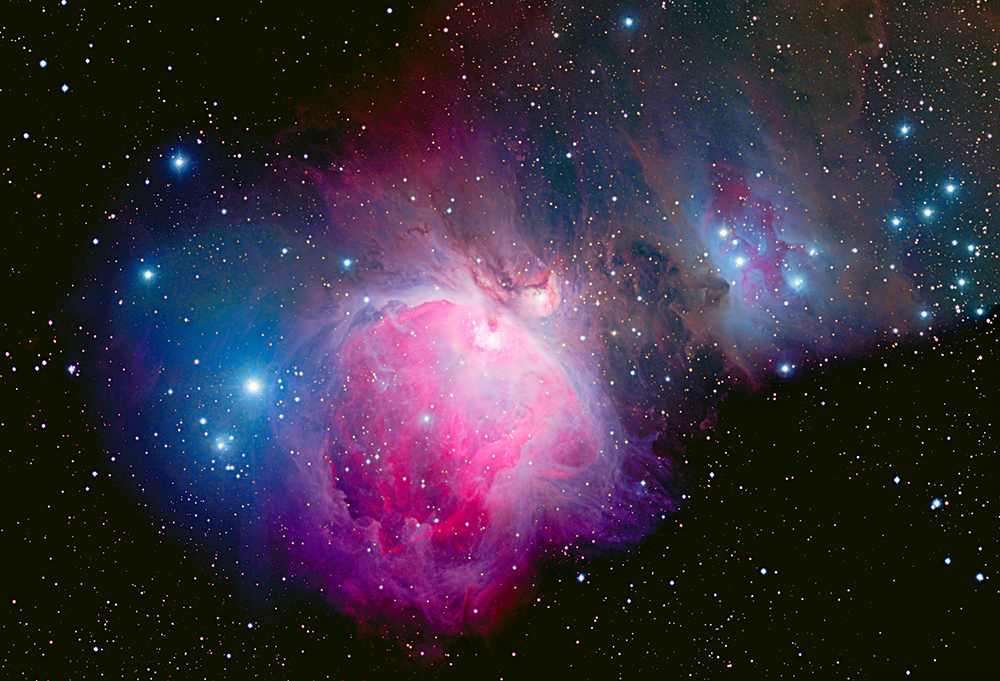
|
From Wikipedia, the free encyclopedia "The Orion Nebula (also known as Messier 42, M42, or NGC 1976) is a diffuse nebula situated in the Milky Way, being south of Orion's Belt in the constellation of Orion. It is one of the brightest nebulae, and is visible to the naked eye in the night sky. M42 is located at a distance of 1,344 ± 20 light years and is the closest region of massive star formation to Earth. The M42 nebula is estimated to be 24 light years across. It has a mass of about 2,000 times that of the Sun. Older texts frequently refer to the Orion Nebula as the Great Nebula in Orion or the Great Orion Nebula. The Orion Nebula is one of the most scrutinized and photographed objects in the night sky, and is among the most intensely studied celestial features. The nebula has revealed much about the process of how stars and planetary systems are formed from collapsing clouds of gas and dust. Astronomers have directly observed protoplanetary disks, brown dwarfs, intense and turbulent motions of the gas, and the photo-ionizing effects of massive nearby stars in the nebula."
|
 |
| Click on Image for Higher Resolution |
|
Date : January 2010 Equipment used :
Exposure Detail : Four panel mosaic where each panel RGB = 12 exposures each@ 120 sec binned 1x1 Also added was a stack of RGB 12 exposures each@ 1 sec for the Trapezium area Total hours 4.8 |
This Web Page was Built with PageBreeze Free HTML Editor